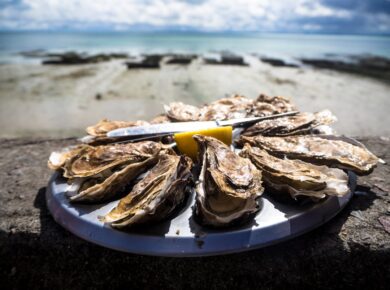The history of Schweppes in Russia is a fascinating tale that intertwines the evolution of a global beverage brand with the rich tapestry of Russian culture and society. Founded in 1783 by Jacob Schweppe in Geneva, Switzerland, the brand initially gained fame for its carbonated mineral water. However, it wasn’t until the late 19th century that Schweppes made its foray into the Russian market.
The introduction of Schweppes to Russia coincided with a period of significant social and economic change, as the country was undergoing rapid industrialization and urbanization. The allure of carbonated beverages quickly captured the attention of the Russian elite, who were eager to embrace Western luxuries. By the early 20th century, Schweppes had established a foothold in major Russian cities such as St.
Petersburg and Moscow. The brand’s popularity surged during this time, as it became synonymous with sophistication and modernity. The Russian aristocracy and burgeoning middle class began to incorporate Schweppes into their social gatherings, viewing it as a symbol of status.
However, the tumultuous events of the Russian Revolution in 1917 disrupted this burgeoning market. The nationalization of industries and the subsequent economic turmoil posed significant challenges for foreign brands, including Schweppes. Despite these obstacles, the brand managed to maintain a presence in the country, albeit in a limited capacity.
The Unique Flavors of Russian Schweppes
One of the most intriguing aspects of Schweppes in Russia is its unique array of flavors that cater specifically to local tastes. While the brand is known globally for its classic tonic water and ginger ale, the Russian market has embraced a diverse range of flavors that reflect the country’s culinary heritage. For instance, one of the standout offerings is the “Schweppes Lemonade,” which combines the refreshing zest of lemons with a hint of sweetness, making it a popular choice during the hot summer months.
This flavor resonates with Russians who have a long-standing tradition of enjoying lemonade as a refreshing beverage. In addition to traditional flavors, Schweppes has also introduced more adventurous options that appeal to the adventurous palates of Russian consumers. Flavors such as “Cranberry” and “Elderflower” have gained traction, showcasing the brand’s ability to innovate while remaining true to its roots.
The incorporation of local ingredients and flavor profiles not only enhances the drinking experience but also fosters a sense of connection between the brand and its consumers. This strategy has proven effective in establishing Schweppes as a versatile mixer for cocktails and a standalone beverage that can be enjoyed on its own.
How Schweppes has Evolved in the Russian Market

The evolution of Schweppes in the Russian market is marked by adaptability and resilience in response to changing consumer preferences and economic conditions. After the fall of the Soviet Union in 1991, Russia experienced a wave of globalization that opened up new opportunities for foreign brands. Schweppes seized this moment to revitalize its presence in the country, launching aggressive marketing campaigns that highlighted its heritage and quality.
The brand positioned itself as a premium product, appealing to consumers who were increasingly seeking out international brands as symbols of modernity and sophistication. In recent years, Schweppes has further refined its marketing strategy to resonate with younger consumers who prioritize authenticity and unique experiences. Social media campaigns and collaborations with local influencers have become integral to Schweppes’ approach, allowing the brand to engage with a new generation of drinkers.
Additionally, the rise of health-conscious consumers has prompted Schweppes to introduce low-calorie and sugar-free options, catering to those who are mindful of their dietary choices. This evolution reflects not only changing consumer preferences but also a broader trend within the beverage industry towards healthier alternatives.
The Role of Schweppes in Russian Cocktails and Mixology
| Metrics | Details |
|---|---|
| Popularity of Schweppes | Percentage of bars and restaurants in Russia that use Schweppes in their cocktail recipes |
| Schweppes Varieties | Number of different Schweppes flavors used in Russian cocktails and mixology |
| Consumer Preferences | Survey results on the preferred Schweppes flavor for cocktails among Russian consumers |
| Market Share | Percentage of the Russian cocktail market held by Schweppes compared to other mixers |
| Usage in Signature Cocktails | Number of renowned Russian mixologists who incorporate Schweppes in their signature cocktail recipes |
Schweppes has carved out a significant niche within the realm of cocktails and mixology in Russia, becoming a staple ingredient in bars and restaurants across the country. The versatility of Schweppes products makes them ideal mixers for a wide range of cocktails, from classic gin and tonics to innovative concoctions that showcase local flavors. Bartenders have embraced Schweppes as an essential component in crafting signature drinks that appeal to both traditionalists and adventurous drinkers alike.
One notable cocktail that highlights Schweppes’ role in Russian mixology is the “Moscow Mule,” which combines vodka, ginger beer, and lime juice served in a distinctive copper mug. The use of Schweppes Ginger Ale or Ginger Beer adds depth and complexity to this beloved drink, enhancing its refreshing qualities. Additionally, mixologists have begun experimenting with Schweppes flavors like “Elderflower” to create unique twists on classic cocktails, showcasing their creativity while appealing to consumers’ desire for novel experiences.
Exploring the Cultural Significance of Schweppes in Russia
Beyond its role as a beverage brand, Schweppes holds cultural significance in Russia that extends into social rituals and traditions. The act of sharing drinks has long been an integral part of Russian hospitality, with beverages often serving as a focal point during gatherings and celebrations. Schweppes has become synonymous with these moments, representing not just refreshment but also connection and camaraderie among friends and family.
Moreover, Schweppes has been featured prominently in various cultural events and festivals throughout Russia, further solidifying its place in the national consciousness. From music festivals to culinary events, Schweppes has positioned itself as a partner in celebrating Russian culture and creativity. This engagement with local traditions has fostered a sense of loyalty among consumers who view Schweppes not merely as a product but as part of their cultural identity.
The Future of Schweppes in Eastern Europe

Looking ahead, the future of Schweppes in Eastern Europe appears promising as consumer trends continue to evolve. The region is experiencing a growing interest in premium beverages and craft cocktails, creating opportunities for brands like Schweppes to expand their offerings further. As younger generations become more discerning about their beverage choices, there is potential for Schweppes to introduce innovative flavors and products that cater to these preferences.
Additionally, sustainability is becoming an increasingly important consideration for consumers across Eastern Europe. Brands that prioritize eco-friendly practices and transparent sourcing are likely to resonate more with environmentally conscious consumers. Schweppes can leverage this trend by emphasizing its commitment to sustainability through responsible sourcing of ingredients and environmentally friendly packaging solutions.
In conclusion, Schweppes’ journey through Russia reflects not only its adaptability as a brand but also its deep-rooted connection to Russian culture and society. As it continues to evolve within this dynamic market, Schweppes is poised to remain a beloved choice among consumers who appreciate both tradition and innovation in their beverage experiences.













